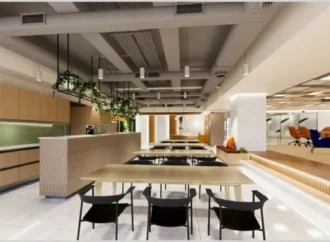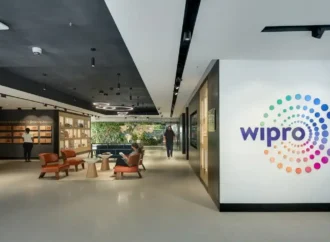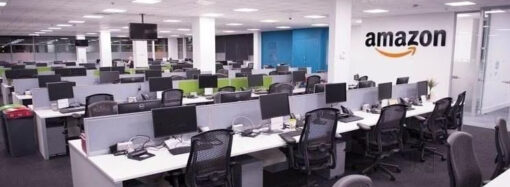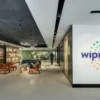Flex workspaces are redefining urban development by creating jobs, boosting economies, and promoting sustainability. In India, this market is projected to contribute USD 2.2 billion by 2025, driving significant economic and infrastructural growth.
The concept of the traditional office is undergoing a profound redefinition. With technological advancements and shifting business needs, flexible workspaces—from co-working environments to fully serviced offices—are becoming central to urban development. These versatile spaces are more than just offices; they blend innovation, convenience, and economic vitality. This article explores the extensive economic impact of flex workspaces on urban development, examining their role in job creation, revitalizing underutilized spaces, enhancing infrastructure, and bolstering economic resilience. We will reveal these spaces’ significant role in shaping tomorrow’s cities through data-driven insights and real-world case studies.
India’s Flex Workspace Market:
* Growth Statistics: India has seen exponential growth in the flex workspace market. According to a JLL report, India’s flex space market grew by 50% from 2018 to 2022, with cities like Mumbai, Bengaluru, and Delhi NCR leading the way.
*Economic Impact: The proliferation of flex workspaces in Indian cities has contributed to the creation of approximately 10,000 direct jobs and significantly boosted local economies. A report by Knight Frank highlights that the flex space market in India is expected to contribute USD 2.2 billion to the economy by 2025.
Highlight:
*Job Creation: Approximately 10,000 direct jobs created.
*Economic Contribution: Expected to contribute USD 2.2 billion to the economy by 2025.
Challenges and Considerations
While the economic benefits of flex workspaces are substantial, several challenges need to be addressed to maximize their impact on urban development:
*Impact on Business Expansion Plans:
The availability of flex workspaces has made it easier for firms to explore and execute their expansion plans in India, significantly contributing to the economic development of cities. For instance, the growing presence of Global Capability Centers (GCCs) in India is expected to drive substantial demand for office spaces. In the next couple of years, GCCs are projected to account for about 40% of the total demand for office spaces in the country. This influx of businesses not only stimulates local economies by creating jobs but also attracts investments in infrastructure and services, further enhancing urban development and economic resilience.
*Regulatory Framework:
Ensuring that flex workspaces comply with local zoning laws and regulations is crucial. Policymakers need to create a conducive regulatory environment that supports the growth of these spaces while maintaining urban planning standards.
*Infrastructure Strain:
The increased demand for flex workspaces can strain existing urban infrastructure, such as transportation and utilities. Cities must invest in upgrading and expanding infrastructure to accommodate this growth sustainably.
*Workforce Adaptation:
The shift to flexible working arrangements requires businesses and employees to adapt to new ways of working. This includes investing in technology, training, and fostering a culture of collaboration and flexibility.
Future Outlook
The future of urban development is intrinsically linked to the evolution of workspaces. As more businesses embrace hybrid working models, the demand for flex workspaces is expected to continue rising. This trend presents an opportunity for cities to reimagine urban spaces, fostering economic growth, and enhancing the quality of life for residents.
*Need for compliant properties:
With the growing emphasis on hybrid working models, the importance of compliant properties cannot be overstated. Ensuring that flex workspaces adhere to local regulations and standards, including health and safety guidelines, accessibility requirements, and environmental regulations, is crucial. Compliant properties not only provide a safe and secure environment for users but also build trust and credibility, attracting more businesses and professionals to these spaces.
*Sustainable Development:
Flex workspaces can play a pivotal role in promoting sustainable urban development. By optimizing the use of existing buildings and reducing the need for new construction, these spaces contribute to lower carbon footprints and more sustainable cities.
*Technology Integration
The integration of advanced technologies in flex workspaces, such as smart building systems, AI-driven workspace management, and high-speed connectivity, will further enhance their appeal and functionality. This technological edge will attract more businesses, driving further economic growth.
Highlight:
Technological Edge: Smart systems, AI, and high-speed connectivity enhancing workspace functionality.
*Community Building:
Flex workspaces have the potential to become community hubs, fostering collaboration and networking among diverse groups of professionals. This community-driven approach can lead to innovative solutions to urban challenges and create a more inclusive and dynamic urban environment.
Conclusion
Flex workspaces significantly impact urban development by fostering entrepreneurship, improving infrastructure, and enhancing economic resilience. In India, the flex workspace market is projected to contribute USD 2.2 billion to the economy by 2025, while globally, the market is growing at a compound annual growth rate of 21.3%, supporting millions of jobs and contributing billions of dollars to the global economy. Integrating advanced technologies and sustainable practices further emphasizes their importance.
As cities adapt to changing work paradigms, flex workspaces will play a critical role in shaping future urban landscapes. Addressing challenges related to regulations, infrastructure, and workforce adaptation is essential to maximize their benefits. By embracing this trend, cities can promote economic growth and enhance residents’ quality of life. Flex workspaces herald a new era of innovation, convenience, and economic vitality, crucial for the future of urban development.























